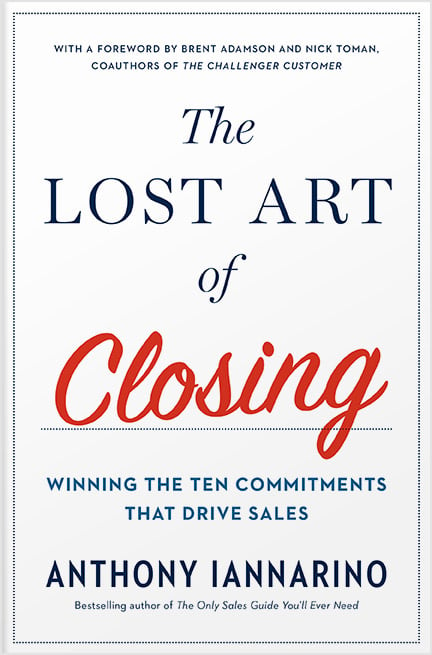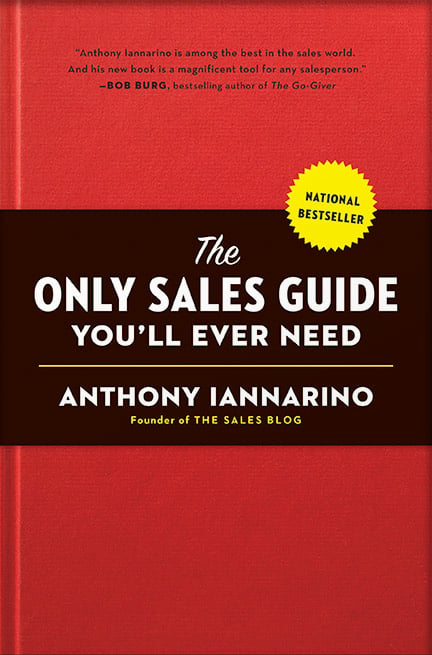The Gist:
- It’s heresy to say so, but the sales process was designed to solve the sales organization’s problems.
- Creating a repeatable process for salespeople is supposed to ensure success, but it rarely creates value for clients.
- We are evolving our approaches too slowly and need to innovate faster.
As you start to recognize how much professional sales has changed and how impotent the legacy approaches are, you start to realize just how many structures and strategies were designed to solve the sales organization’s problems, not create value for the client. In particular, the standard “sales process” sought to provide a blueprint for success, a repeatable formula to ensure that every salesperson could win deals. These outdated and misplaced priorities do nothing to address the increasing challenges our clients face every time they have to change.
As a profession, we missed the inflection point by a good number of years, overlooking significant developments and their implications for our clients’ results (and our own). We now have to do the work of accelerating our strategies and tactics to architect a new sales conversation, one that solves the client’s problems with solving their problems.


A Process Past Its Prime
The sales process is now long in the tooth, overdue to retire after a long and prosperous career. My skepticism about the sales process is more than ten years old. While I believe that linear sales models, much like maps, can help you understand where you are, in my experience the actual sales conversation was far less linear than the slide decks promised. Likewise, while checklists can help you plan and move through meetings, few of the target outcomes could prove that the deal was real, that it was progressing, and that the salesperson had a high probability of winning the client’s business.
The first thing I noticed back then was that the sales conversation was increasingly nonlinear, dynamic, and subject to fits and starts, with different stakeholders moving in and out of the conversation with what seemed like randomness. Perhaps you’ve seen deals go the same way but you still cling to the traditional sales process, honoring it only in the breach. In fact, many salespeople still believe that the client’s only problem is the one they talk about in sales meetings, not recognizing that the decision-solving process has problems of its own. The old sales process simply isn’t designed to address the meta problems that clients experience as they try to navigate an increasingly complex environment, so it often leaves decision-makers and decision-shapers to their own devices, even leaving them out completely.

The Buyer’s Journey Needs Facilitating
Instead of the legacy sales process, let’s explore another idea, one that provides value for both the sales organization and the client: a facilitated buyer’s journey. My first attempt to show this model was The Lost Art of Closing, where I outlined ten conversations that I noticed my clients needed to have before they could move forward. Some of those conversations went very fast, taking just a few meetings, while others took much longer. As my vantage point was sharpened over time, it was easier to propose next steps that made sense to the contacts I was working to serve.
No more pushy sales tactics. The Lost Art of Closing shows you how to proactively lead your customer and close your sales.
Because The Lost Art of Closing was written for the sales audience, I undershot the mark as it pertains to explaining problems from the client’s view, even though I provided examples of why clients avoid some of the conversations that are necessary to get to a decision and the better results they need. While it’s all the rage to connect work to empathy, there is nothing empathetic about the sales process. We do only slightly better when it comes to helping clients with the problems of buying.


Going Forward in Reverse
The problem with sales now is that it is no longer served by the comfort and confidence that comes with a sales process, with all the guardrails and blueprints that never lived up to their promise. So what’s next?
The complexity of living, surviving, and potentially thriving in our complex world demands agility, the ability to change directions quickly. Enabling that agility means recognizing that some large part of the sales conversation needs to address the problems clients have solving their problems. Structures that focus on problems, pain points, and solutions pay no heed to the meta problems, which often cause more trouble than any given presenting problem. We need to stop promising “solutions” that fix everything and start working on client-oriented outcomes that improve both decisions and decision-making.
Winning deals is, in large part, about creating value for your prospective client. That’s always been true, but the areas where clients need help are now larger and more diverse than they were in the past. Enabling salespeople to meet these challenges is something like going forward in reverse, solving the client’s problems for and with them, while helping enable the decision-making that precedes better results.
As the author William Gibson wrote, “The future is here—it’s just not evenly distributed.” It is disappointing how long it takes for our transformations to catch up to our reality. By the time we replace the legacy approaches with something that creates more value for our clients, we are likely to be on the brink of the next inflection point. Perhaps prioritizing and enabling agility will allow us to run headlong into the future, innovating fast enough and effectively enough to not just keep up with our clients but lead them.
Do Good Work:
- What problems are your clients having with solving their problems?
- How can you facilitate your client’s buying journey in a way that creates a preference to buy from you?
- How would you replace your legacy approach with something better designed for today’s environment?

Essential Reading!
Get my first book: The Only Sale Guide You'll Ever Need
"The USA Today bestseller by the star sales speaker and author of The Sales Blog that reveals how all salespeople can attain huge sales success through strategies backed by extensive research and experience."
Buy Now







.jpg?width=768&height=994&name=salescall-planner-ebook-v3-1-cover%20(1).jpg)


